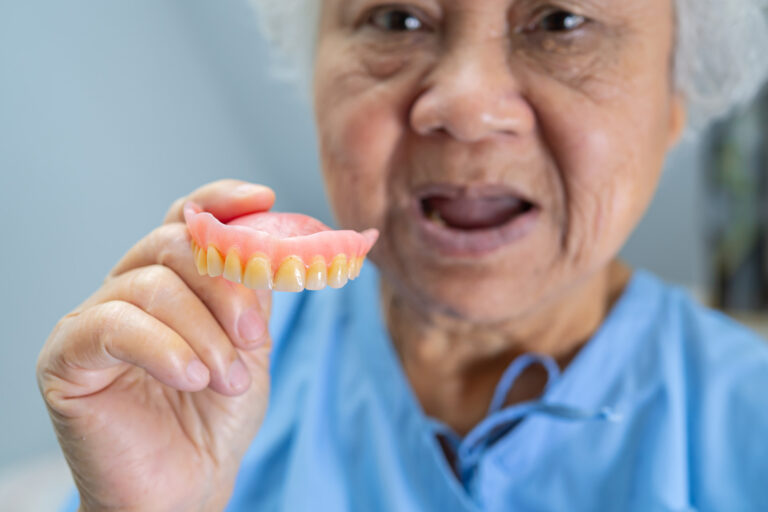If you’re wondering what veneers are, they are thin, custom-made shells bonded to the front of teeth to change their shape, colour and overall appearance. For many, veneers offer a way to address issues such as discolouration, chips, gaps, or worn enamel without undergoing more invasive dental work, making them one of the most popular treatments in cosmetic dentistry.
Beyond aesthetics, veneers can also restore function if minor wear or damage has weakened a tooth. The two main options are composite veneers and porcelain veneers, which are the most commonly used materials. Each has its advantages, and understanding the difference between composite vs porcelain veneers is important if you’re considering treatment. The choice will affect not only how your smile looks but also how long the results will last and the cost.

Composite Veneers
Direct composite veneers can be completed in one appointment with minimal tooth preparation, allowing for same-day treatment and less invasive procedures. The dentist sculpts and polishes the resin chairside in one visit, shaping it to match your natural smile. This immediate application is one of their biggest advantages for patients who want fast results.
In terms of longevity, composite veneers last between 4 and 8 years, but with reasonable care, some can last longer.
The primary appeal of composite veneers lies in their affordability and minimally invasive approach. The advantages of composite include lower costs, reversibility, ease of repair, and preservation of the natural tooth structure, compared to porcelain veneers. Since they require little to no tooth reduction, they are reversible, making them suitable for those who are hesitant about permanent tooth changes. Repairs are also easy. If a veneer chips, the resin can often be patched or polished in the clinic without full replacement.
A good candidate for composite veneers is someone who wants a conservative, budget-friendly cosmetic solution and who doesn’t need major structural changes to their teeth. They are an entry-level cosmetic option, great for those on a tighter budget or not ready for the long-term commitment of porcelain veneers.

Porcelain Veneers
Porcelain is a strong, aesthetically pleasing material used for veneers due to its durability and natural appearance. Porcelain veneers are custom-made shells fabricated in a dental laboratory and bonded to the teeth in a separate appointment.
Porcelain veneers are ideal for patients who want a more permanent, dramatic transformation, especially in cases of significant discolouration, enamel wear or larger cosmetic concerns that composites can’t fully address.
The benefits of porcelain veneers include exceptional durability and a highly realistic tooth-like appearance. Porcelain veneers can last 10 to 15 years, sometimes even longer with reasonable care, far outlasting composite veneers. They also resist staining much better, maintaining their brightness even for patients who regularly drink coffee, tea or red wine.
However, porcelain veneers come with trade-offs. The process requires more preparation, including the removal of a thin layer of enamel to accommodate the veneer’s thickness. This makes the treatment irreversible. They also need at least two visits: one for preparation and impressions, and another for final placement once the porcelain veneers are fabricated.

Composite Veneers vs Porcelain Veneers: Key Comparisons
When comparing composite veneers vs porcelain veneers, several factors stand out.
Aesthetically, porcelain veneers tend to appear more natural due to porcelain’s translucency, while composite veneers can look great but may not be as lifelike in certain lighting conditions. In terms of durability, porcelain is stronger and less prone to wear, and composites require more maintenance and replacement. Lastly, composite veneers are more affordable upfront, but their shorter lifespan means the cost of replacements adds up over time. Porcelain veneers require a higher initial investment but provide longer-lasting results, making them more cost-effective for many patients.
Treatment time is another factor. Composite veneers can be completed in a single visit, ideal for patients seeking immediate results. Porcelain veneers take longer due to the laboratory fabrication and take at least two sessions.
Composite veneers preserve more of the natural tooth structure and can be removed or replaced relatively easily, while porcelain veneers require permanent enamel reduction and can’t be reversed. Patients need to consider their comfort with a permanent commitment to porcelain.
Ultimately, the better choice depends on your priorities. If you want a quick, reversible, and budget-friendly option, composite veneers may be the way to go; if you prefer long-lasting, highly aesthetic results and are comfortable with a higher investment, porcelain veneers may be the better choice.

The Veneer Procedure: What to Expect
For composite veneers, the process is simple. After cleaning and preparing the teeth, the dentist applies layers of resin directly, sculpting and curing each layer until the desired shape and colour is achieved. The veneers are then polished for a natural finish. Most patients leave with a transformed smile after just one visit.
Porcelain veneers involve more steps. During the first appointment, the dentist reshapes the tooth surface slightly and takes impressions. Temporary veneers are often placed while the final porcelain veneers are fabricated in the lab. At the second appointment, the porcelain shells are bonded to the teeth. This two-stage process takes longer but results in a custom-made, precise fit.
Both types of veneers require an adjustment period as patients adapt to their new bite and appearance. Good oral hygiene is essential for both natural teeth and veneers. Regular brushing, flossing and professional dental cleanings help maintain the results for as long as possible. Avoiding habits such as chewing ice or opening packaging with teeth also prolongs the life of veneers.

FAQs about Veneers
Are composite veneers reversible?
Can porcelain veneers chip or break?
How do composite and porcelain veneers stain?
Which veneer is better for chipped teeth?
Can veneers be combined with other cosmetic treatments?
Ready to Make Your Choice?
Deciding between composite veneers vs porcelain veneers requires weighing your goals, budget and lifestyle. With a skilled dentist, you can make an informed decision that balances immediate results with long-term value.
At TEETH @ Tiong Bahru, we offer both composite and porcelain veneers with precision, comfort and aesthetics in mind. If you’re considering veneers and want personalised advice, book a consultation with us. We’ll create a treatment plan that gives you the smile you’ve always wanted.







